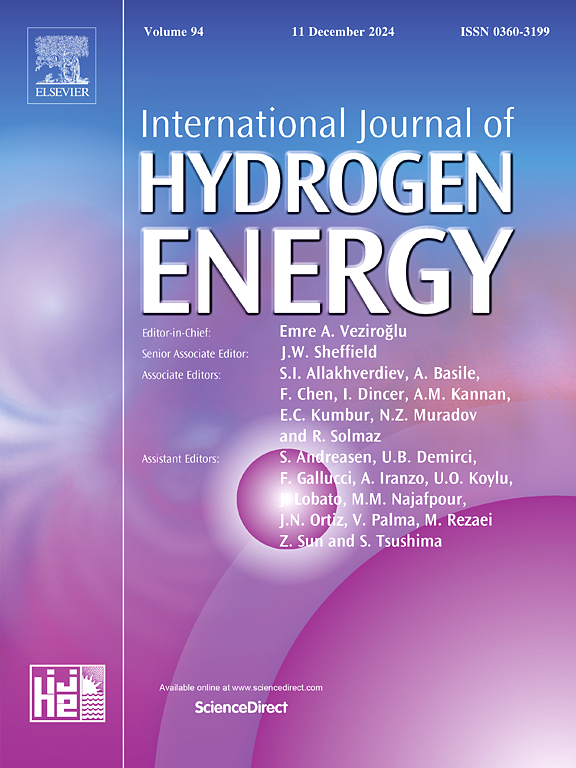Nano-Pd/CeO2 catalysts for hydrogen storage by reversible benzene hydrogenation/dehydrogenation reactions
Release time:2024-08-19
Hits:

- Impact Factor:
- 7.139
- DOI number:
- 10.1016/j.ijhydene.2021.01.235
- Affiliation of Author(s):
- 重庆工商大学
- Teaching and Research Group:
- 化学工程系
- Journal:
- International Journal of Hydrogen Energy
- Funded by:
- 重庆市教育委员会;重庆市科技局
- Key Words:
- Nano-Pd/CeO2 catalyst;Preparation methods;Structure;Benzene hydrogenation;Cyclohexane dehydrogenation;Hydrogen storage
- Abstract:
- Nano-CeO2 supports, which have different structure from different preparation methods, were used to prepare nano-Pd/CeO2 catalysts. The hydrogen storage capacity of prepared nano-Pd/CeO2 catalysts were studied via vapor phase benzene hydrogenation and cyclohexane dehydrogenation reactions. Results show that the prepared Pd/CeO2 catalysts exhibit excellent benzene hydrogenation and cyclohexane dehydrogenation performances. The catalytic performance of the Pd/CeO2 catalysts is related to the dispersion of metallic Pd, hydrogen adsorption-desorption ability and structure of Pd/CeO2 catalysts and so on. And those properties are also directly affected by the morphology and mesoporous structure of the prepared nano-Pd/CeO2 catalysts that can be regulated by CeO2 support preparation methods. The synergistic effect between metal Pd, CeO2 support and their structures can effectively promote benzene hydrogenation and cyclohexane dehydrogenation, thus promoting hydrogen storage capacity. The prepared Pd/CeO2-HT catalyst, which has high specific surface area, developed pore structure and highly dispersed metal Pd species, exhibits superior catalytic performances. And, the Pd/CeO2-HT catalyst exhibits superior catalytic hydrogen storage performances. The benzene conversion over it at 200 °C reaches 99.5%. Whereas the cyclohexane conversion at 450 °C is 65.3%, and the H2 production capacity is 73.77 g/h.
- First Author:
- Guilin Zhou
- Co-author:
- 李涛,陈炯异,DLD,XHM
- Indexed by:
- 源刊论文
- Correspondence Author:
- 周桂林
- Document Code:
- XCJVO2LLKPETGP3CYE2PQ3U83I2XKC81
- Discipline:
- Engineering
- First-Level Discipline:
- Chemical Engineering and Technology
- Document Type:
- Journal Article
- Volume:
- 46
- Issue:
- 4
- Page Number:
- 14540–14555
- Translation or Not:
- no
- Date of Publication:
- 2021-04-01
- Links to published journals:
- https://doi.org/10.1016/j.ijhydene.2021.01.235
Attachments:



